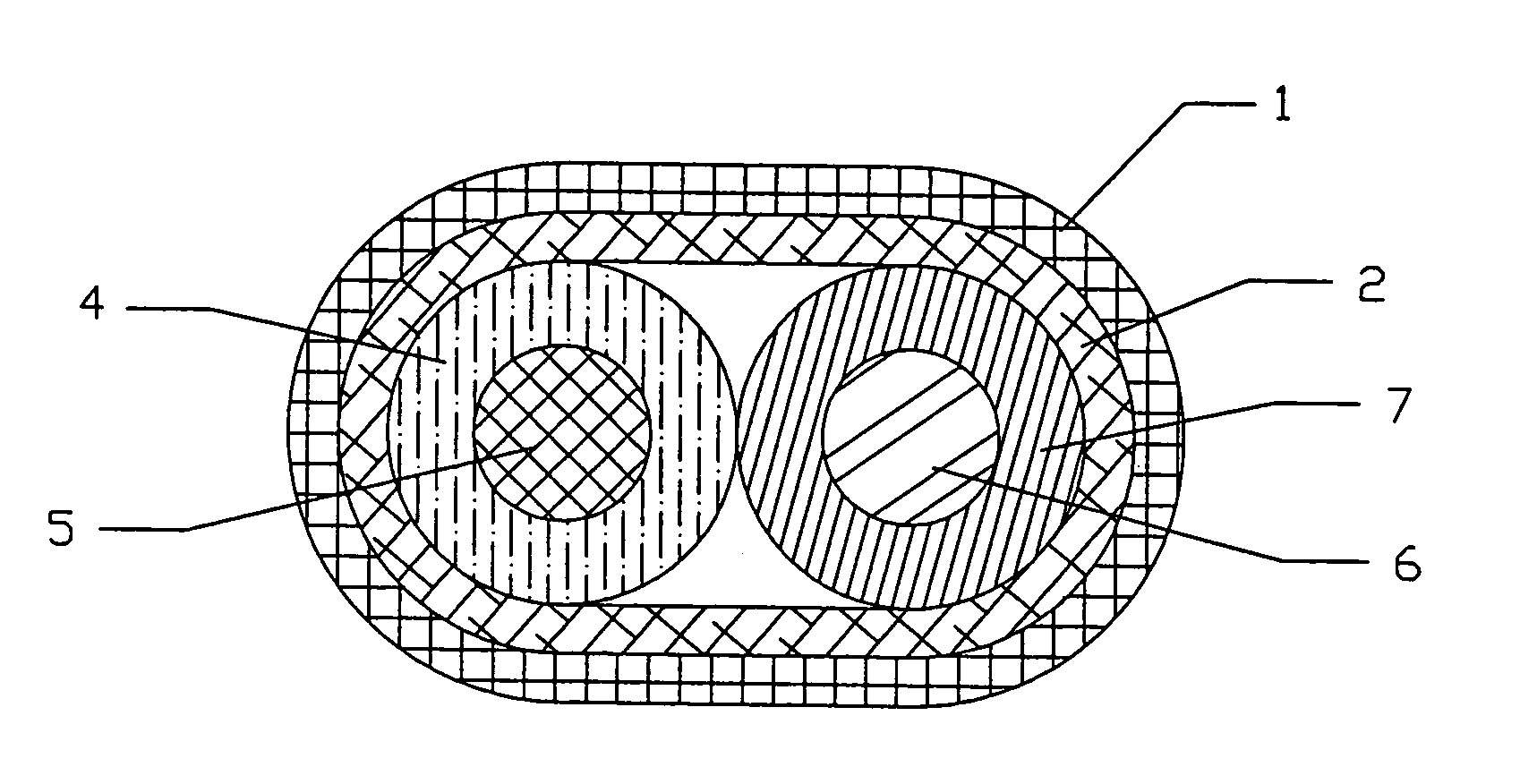Heater with simultaneous hot spot and mechanical intrusion protection
a technology of hot spot detection and mechanical intrusion protection, which is applied in the direction of ohmic resistance heating, heating element shapes, electrical appliances, etc., can solve the problems of severe scorching of heating products, fire, and inability of heating cables to have inherent thermal cut-off capabilities, so as to prevent or minimize current leakage, increase dielectric properties, and ensure safety. the effect of safety
- Summary
- Abstract
- Description
- Claims
- Application Information
AI Technical Summary
Benefits of technology
Problems solved by technology
Method used
Image
Examples
Embodiment Construction
[0028]The invention consists of a heating element containing: (a) at least metal wires or metal / carbon containing textile fibers or combination thereof as heating means, insulated by at least one layer of NTC sensing means, (b) current leakage conductor, electrically connected with NTC sensing means and (b) at least one outer insulation of the heater. The invention describes a method of hot spot detection and overheating protection, using a combination of heating means, NTC layer, current leakage conductor and electronic controller, which detects the current imbalance between the live end and the neutral end of the heater.
[0029]The term “conductive means” or “conductor” described in this invention shall mean at least one of the following electrically conductive materials: metal wires, metal mesh or metal foil, electrically conductive textile fibers, electrically conductive polymers and other conductive materials, suitable for the purpose of this invention.
[0030]The term “heating mea...
PUM
 Login to View More
Login to View More Abstract
Description
Claims
Application Information
 Login to View More
Login to View More - R&D Engineer
- R&D Manager
- IP Professional
- Industry Leading Data Capabilities
- Powerful AI technology
- Patent DNA Extraction
Browse by: Latest US Patents, China's latest patents, Technical Efficacy Thesaurus, Application Domain, Technology Topic, Popular Technical Reports.
© 2024 PatSnap. All rights reserved.Legal|Privacy policy|Modern Slavery Act Transparency Statement|Sitemap|About US| Contact US: help@patsnap.com










